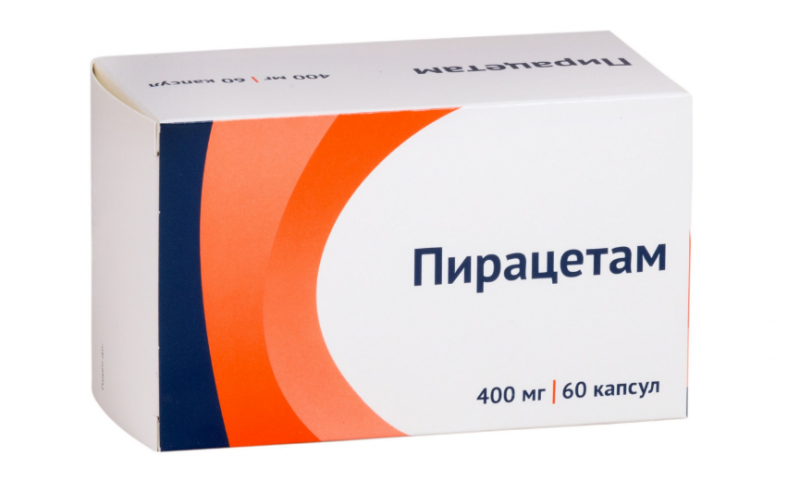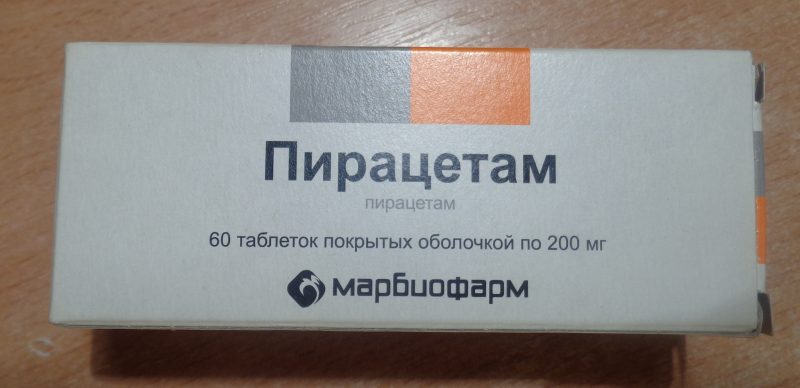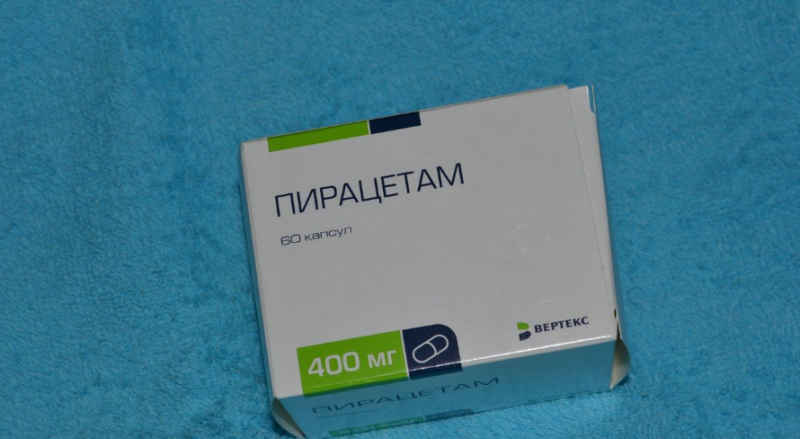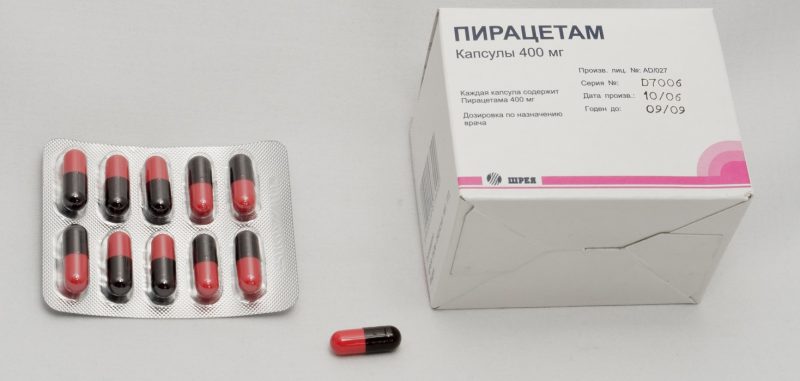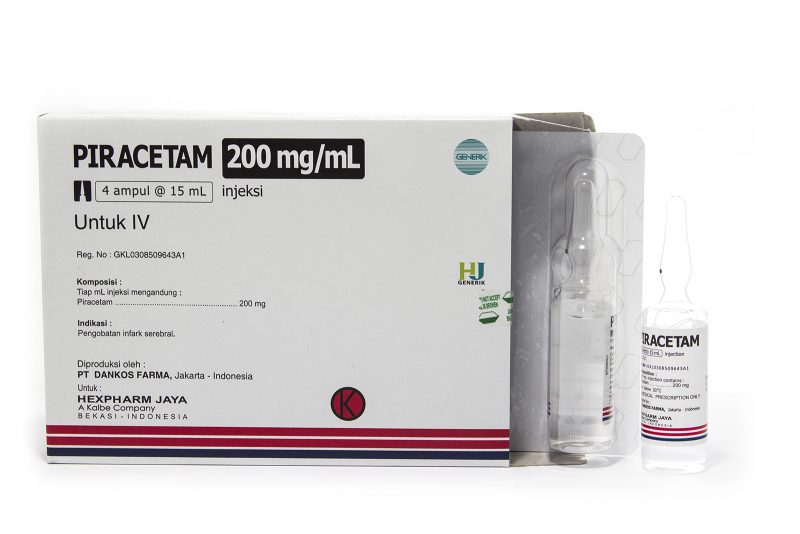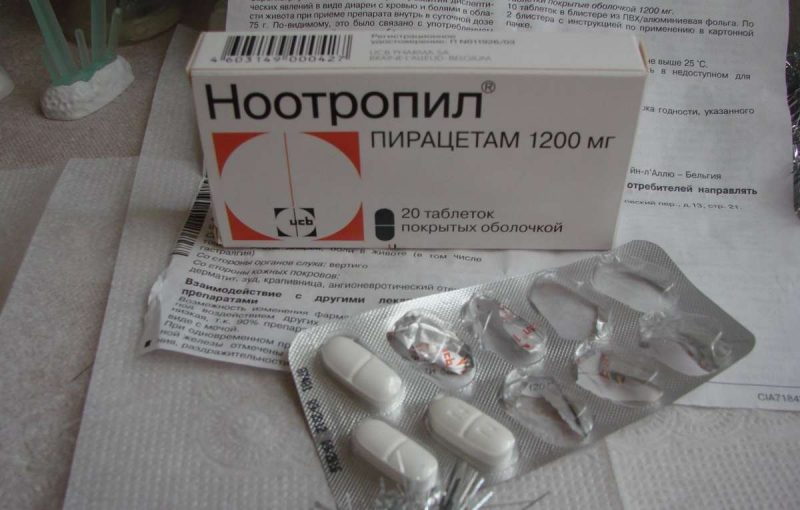Piracetam is a nootropic medicine that improves metabolic processes, blood circulation and brain function. Consider what helps Piracetam and what is its effect on the body.
Material Content:
Composition and release forms
Manufacturers make this tool in the form of tablets, solution, capsules and granules for syrup (for children).
The main active component of the drug is the substance of the same name - piracetam.
- In a tablet, it can be in an amount of 200 mg to 1200 mg.
- The capsule contains 400 mg of the main compound.
- The jar of granules contains 2000 mg or 2800 compounds.
- Ampoules with a solution for injection in one milliliter have 200 mg of piracetam.
In all forms of the drug, auxiliary components are also present.
- in capsules is gelatin;
- granules are composed of sugar and various fillers;
- in the solution for injections, you can find low-concentrated acetic acid.
Pharmacological properties and pharmacokinetics
Piracetam is one of the nootropic drugs. It acts on brain activity, improving memory, ability to concentrate and mindfulness.
The drug significantly accelerates the process of interaction of the cerebral hemispheres. If oxygen deficiency or intoxication occurs, Piracetam has a protective and rehabilitative effect.
The tool is able to affect the central nervous system through various mechanisms:
- accelerates the conduct of signals;
- improves metabolism at the cellular level;
- improves blood circulation, without expanding blood vessels.
Also, due to changes in the properties of blood cells, it reduces its coagulability.
After taking the medicine, it is instantly absorbed in full. The highest blood level after oral administration is observed after an hour, after intravenous administration - after half an hour.
In cerebrospinal fluid, the peak concentration of Piracetam is detected after 5 hours. The drug is absorbed by almost 100%.
The concentration in the blood serum is halved after five hours, in the cerebrospinal fluid - after 8.5 hours.
Also, the drug can pass through the blood-brain barrier (from blood vessels to the brain) and the placenta.
What helps the drug in tablets and injections
Due to its properties, the use of Piracetam is successfully practiced in neurology, pediatrics, psychiatry and even narcology.
It is often prescribed to people of advanced years with such ailments:
- systematic dizziness;
- decreased attentiveness;
- sudden changes in behavior;
- unusual gait;
- memory lapses;
- dementia and Alzheimer's disease.
In the neurological field, Piracetam is addressed to eliminate the consequences of ischemic conditions (stroke):
- speech defects;
- violation of the thought process;
- decreased motor activity.
Narcologists introduce Piracetam in the treatment of chronic alcoholism to combat psychosomatic syndrome and withdrawal symptoms.
Pediatricians use the above effects of the medication in the following conditions:
- reduced ability to perceive knowledge in children;
- slow mental development;
- childhood central paralysis;
- brain damage in fetal development.
In the psychiatric direction, it is involved in:
- epilepsy;
- schizophrenia;
- depression.
The use of Piracetam is possible during:
- rehabilitation of various brain pathologies;
- eliminate dizziness and restore balance;
- treatment of sickle cell anemia.
Instructions for use and dosage of Piracetam
The dosage of the drug is determined by the doctor for each patient individually. Consider the most common types of appointments.
Piracetam tablets, granules, capsules
They are used enterally before meals. In the early stages of treatment - 800 mg 3 times a day. With positive dynamics, the amount of Piracetam is successively reduced to 400 mg.
- the daily norm is from 30 to 160 mg / kg with the number of doses from 2 to 4 times. The duration of one course is from several weeks to six months;
- for elderly people in case of prolonged use, Piracetam is prescribed 1.2-2.4 g per day. During the first two weeks, an increased dosage is used - up to 4.8 g per day (together with other medications);
- after serious injuries and during rehabilitation of people who have suffered coma, they are first prescribed from 9 to 12 g per day, then the amount of the drug is reduced to 2.4 g. Therapy is carried out on the 21st day;
- when treating children from the age of 5 years, the drug is used one capsule (400 mg) three times a day. The maximum daily dose is 1800 mg. The course of treatment is from two weeks to six months;
- with alcoholism, during the period of withdrawal, 12 g of Piracetam is prescribed, for maintenance therapy - 2.4 g per day;
- with sickle cell anemia, it is prescribed in an amount of 160 mg / kg, taking in 4 approaches.
Please note, to prevent the development of insomnia, the drug is not taken after five in the evening.
Piracetam Injections
They are made intravenously (droppers or stream) and intramuscularly. The daily dosage is divided into 2-4 procedures. Injection is used when in the hospital, rarely - on an outpatient basis.
- with dizziness - 2.4-4.8 g per day;
- to eliminate the symptoms of the psycho-organic syndrome, a intake of 4.8 g per day is provided for 7 days, then, in order to maintain the effect, they are transferred to 1.2-2.4 g per day;
- when a sickle-cell vaso-occlusive crisis occurs, intravenous infusions of 300 mg / kg per day are prescribed, divided into 4 times;
- treatment of cortical myoclonia includes a starting dosage of the drug in the amount of 7.2 mg per day, after which every 3-4 days the value is increased by 4.8 g to obtain a maximum norm of 24 g per day. The therapy is carried out further, trying every six months to reduce the amount of the drug or to cancel it completely, lowering the dosage by 1.2 g every 2 days;
- if cognitive function is impaired in children after 8 years of age, they are prescribed 3.2 g per day for two doses.
During pregnancy and lactation
There are no large-scale experiments to study the effect of Piracetam on the embryo. Therefore, during pregnancy, its use in isolated situations is allowed, if the expected benefit prevails over the possible danger to the baby. After all, as already mentioned - the drug easily passes through the hematoplacental barrier, that is, it is able to influence the child.
Piracetam is excreted in mother's milk. Therefore, if its intake becomes necessary, then breastfeeding is better to stop in advance.
Contraindications, side effects and overdose
Side effects are divided into groups.
Common symptoms associated with exposure to the central nervous system:
- dizziness;
- loss of balance;
- mental excitability;
- irritability;
- unbalanced condition;
- confused consciousness;
- inability to concentrate;
- feelings of anxiety;
- sleep disorders such as insomnia or the appearance of drowsiness;
- depressive disorders;
- loss of coordination;
- headache;
- involuntary movements, cramps, trembling limbs;
- the occurrence of epileptic seizures.
In the digestive system:
- soreness in the abdomen;
- the appearance of nausea;
- bouts of vomiting;
- diarrhea.
When using the medication in the form of injections, local phenomena may occur:
- vein thrombophlebitis;
- soreness at the injection site.
Other reactions:
- lowering blood pressure;
- increased manifestations of angina pectoris;
- fever;
- neuropsychic weakness;
- increased libido;
- weight gain.
The occurrence of allergic phenomena:
- dermatitis;
- itchy skin;
- rashes on the body;
- edema.
Children with mental retardation are highly likely to experience the following:
- unbalanced or anxious state;
- decreased ability to concentrate;
- excessive motor activity;
- irritability.
The occurrence of side effects from this drug is most often observed in elderly patients, if the daily dosage of the drug exceeded 2.5 grams.
Piracetam overdose phenomena occur infrequently, since when it is used, specific doses are prescribed, which must be strictly observed.
Having exceeded the permissible value, the following reactions can be obtained:
- trouble sleeping;
- trembling of the upper and lower extremities;
- enhanced side effects of the drug;
- worsening heart failure.
A separate drug that neutralizes the action of Piracetam does not exist. People who exceed the maximum permitted dose should drink as much fluid as possible to quickly remove excess medication from the body.
In the case of particularly dangerous intoxication, hemodialysis is done, but the effect of it due to the ability of the nootropic to pass through the membrane is half reduced.
The medication is strictly prohibited with the following words:
- severe cases of renal failure,
- hemorrhagic stroke,
- intolerance to the components of the drug.
Nootropic medication should be taken with extreme caution:
- people suffering from kidney failure;
- with liver diseases;
- low coagulation patients;
- in the preoperative period.
If insomnia has appeared, then it is necessary to cancel the drug in the evening, and increase the daily dosage to the required value.
Analogs of a nootropic drug
There are many analogues of the drug that have a similar composition and active compounds:
- Nootropil;
- Memotropil;
- Lucetam
- Stamina;
- Cerebral and others.
Before using them, specialist advice is required.
Do not use Piracetam for self-treatment. It should be prescribed by a doctor after a full examination and taking into account the existing contraindications.


